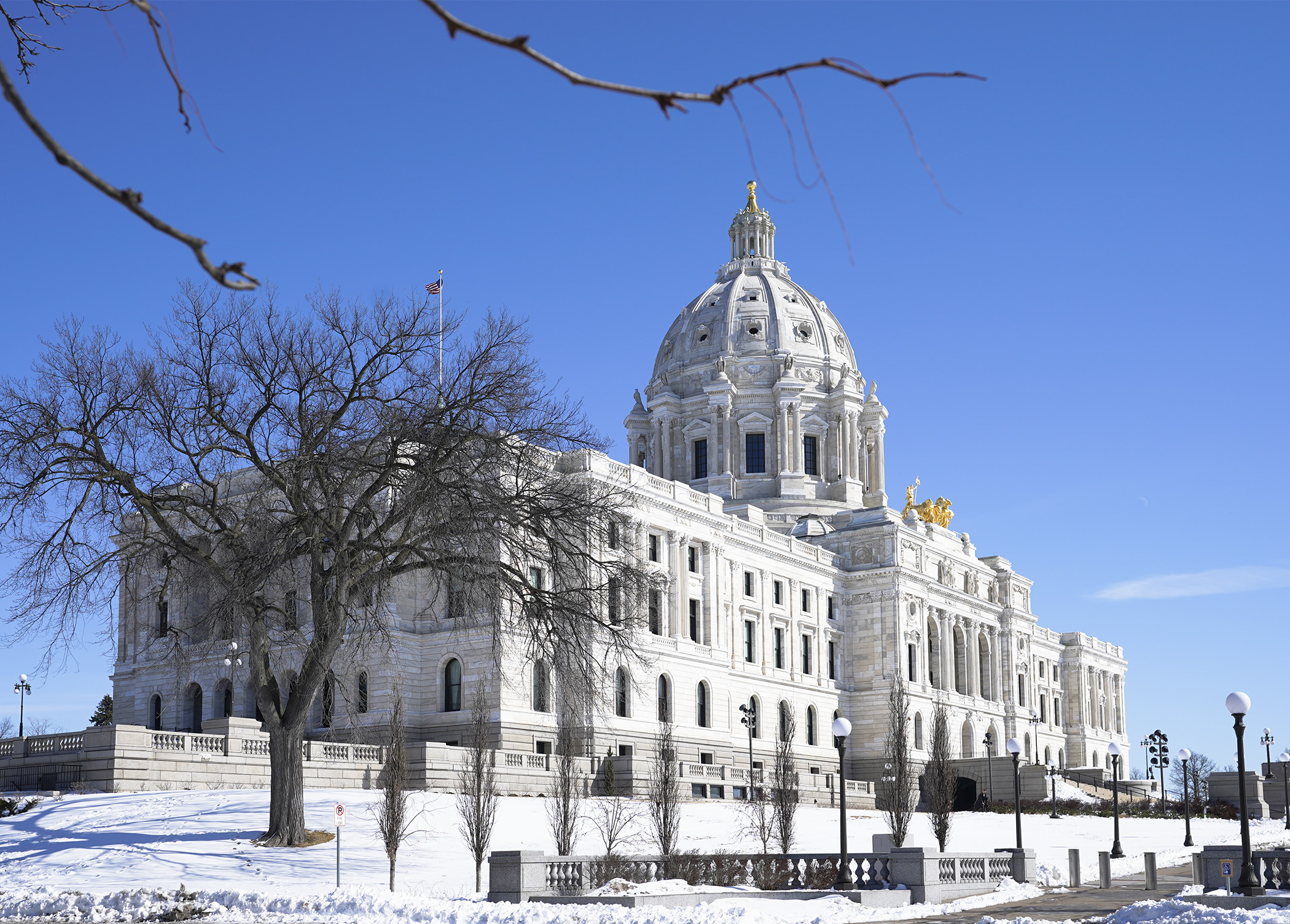Projected $17.6 billion budget surplus presents ‘golden opportunities’

The state's financial situation continues to get better.
Minnesota Management and Budget officials released the November 2022 Budget and Economic Forecast Tuesday, saying the state's projected budget surplus is now a record $17.6 billion.
The forecast provides the most recent snapshot of the state's financial health. Lawmakers will use it to begin looking at budgeting and policy decisions to be made during the 2023 legislative session, which is scheduled to begin Jan. 3 and must end by May 22.
"Strong collections and lower-than-projected spending add to the FY22-23 surplus. Economic headwinds lower expected growth but large leftover surplus and healthy net revenues in FY24-25 create estimated $17.6B available for budget,” according to a statement.
[MORE: View the budget presentation slides]
The sizable number presents “golden opportunities” to do things in many different areas, said Gov. Tim Walz.
Walz plans to release his budget proposal Jan. 24. Increased education funding and child care expansion assistance are all but certain. Local government aid is also among the possibilities.
He plans to again propose rebate checks, an idea that failed to get legislative approval earlier this year; he’s open to tweaking the state tax on Social Security; but the governor won’t be offering a tax cut for wealthy Minnesotans. Incoming House Majority Leader Jamie Long (DFL-Mpls) and incoming Senate Majority Leader Kari Dziedzic (DFL-Mpls) were noncommittal on rebate checks or social security tax changes. Each said they need to let members of their caucuses weigh in.
[MORE: Current operating budget for 2022-23 biennium]
A forecast expected to be released in late February will provide more updated numbers to help legislators and the governor finalize their plans for spending in the 2024-25 biennium that begins July 1, 2023.
After failing to agree on many spending differences during the 2022 session, the Legislature left an estimated $7 billion on the books. Since then, monthly state revenue estimates have continued to better expectations, and are now predicted to be $3.5 billion higher during the current biennium than was estimated in February.
At the same time, spending is expected to be about $1.5 billion lower due mainly to a $280 million decrease in E-12 education spending caused by lower pupil counts and a $1.1 billion drop in health and human services spending. Extensions of public health emergency funding from the federal government meant the state spent less than was expected.
The $5 billion increase combined with the $7 billion that was left unspent means the state is now expected to carryforward $12 billion into the next biennium.
Inflation missing, economic outlook
The overall total could be a bit misleading, especially if a recession were to occur. A 2002 law repealed the inclusion of inflation when projecting expenses.
Rep. Jennifer Schultz (DFL-Duluth) told a House committee in February she believes Minnesota is the only state to account for inflation in projected revenue, but not expenses.
Officials said the forecast does include a mild U.S. recession in 2023 and slower economic growth through 2027. They predict a “three-quarter recession” with a recovery expected to begin the third quarter of 2023.
Inflation continues to be a concern and is now expected to be 8.1% this year, 3.6% higher than was forecast in February. This latest forecast predicts the Federal Reserve will continue to raise interest rates through next spring but could then reverse course and begin lowering them in spring of 2024.
MMB also said that while Minnesota’s labor market remains one of the country’s strongest, employment growth is expected to slow from 3.1% in 2022 to 0.3% in 2023, then remain flat in 2024.
The forecast did include several risk factors that could change the outlook, including uncertainties about inflation, monetary policy, a slow growing economy that is “vulnerable to shocks” and volatility in corporate profits and capital gains.
House leaders react
“Great news,” is how House Speaker Melissa Hortman (DFL-Brooklyn Park) termed the projected surplus.
“Our state is in a strong position to take decisive action to solve big challenges,” she said in a statement. “A workforce shortage is constraining our economic growth, making it even more important that we focus on things that help Minnesotans enter and stay in the workforce — like job training, education, child care assistance, paid family leave, and more. It is also a time to roll out the welcome mat for people who choose to move to Minnesota and expand our workforce.”
In a statement, House Minority Leader Lisa Demuth (R-Cold Spring) said the figure should keep any tax hikes off the table.
“Minnesotans are being massively overtaxed, and we should spend most of the next session working to give as much of it back to Minnesotans as possible. Tax hikes of any kind should be a complete non-starter. Families deserve their money back as they continue to deal with the high cost of groceries, home heating bills, and other everyday necessities."
Related Articles
Search Session Daily
Advanced Search OptionsPriority Dailies
Speaker Emerita Melissa Hortman, husband killed in attack
By HPIS Staff House Speaker Emerita Melissa Hortman (DFL-Brooklyn Park) and her husband, Mark, were fatally shot in their home early Saturday morning.
Gov. Tim Walz announced the news dur...
House Speaker Emerita Melissa Hortman (DFL-Brooklyn Park) and her husband, Mark, were fatally shot in their home early Saturday morning.
Gov. Tim Walz announced the news dur...
Lawmakers deliver budget bills to governor's desk in one-day special session
By Mike Cook About that talk of needing all 21 hours left in a legislative day to complete a special session?
House members were more than up to the challenge Monday. Beginning at 10 a.m...
About that talk of needing all 21 hours left in a legislative day to complete a special session?
House members were more than up to the challenge Monday. Beginning at 10 a.m...